Understanding Chokes
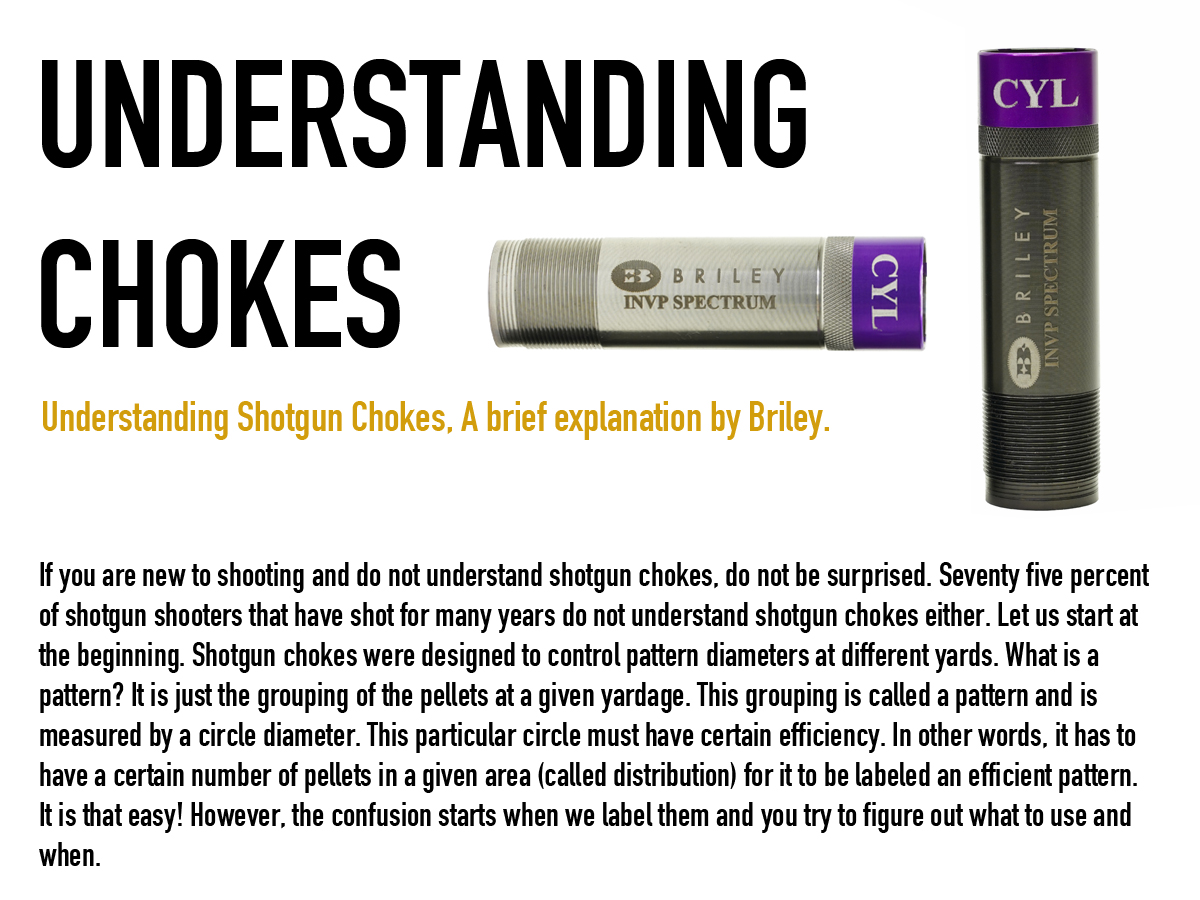
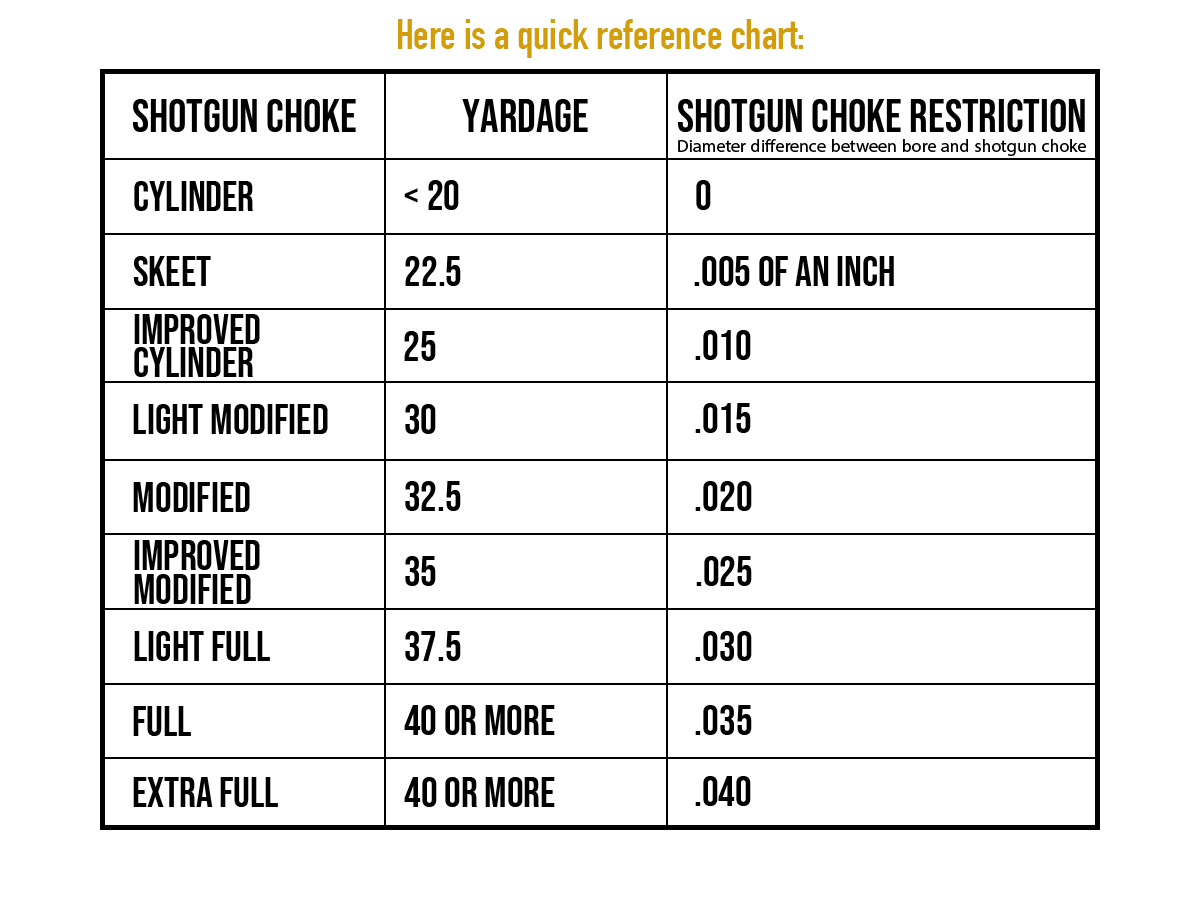
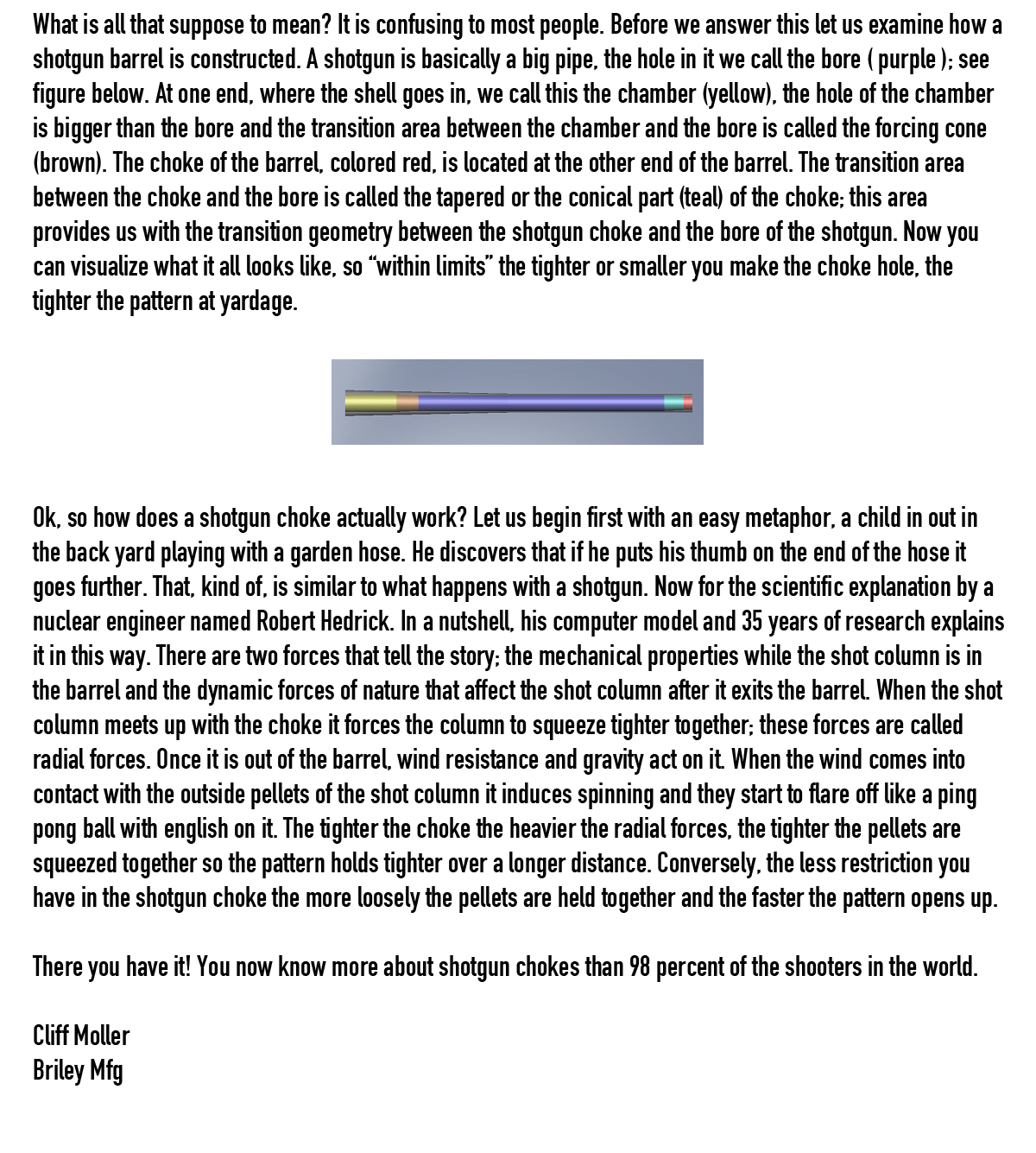
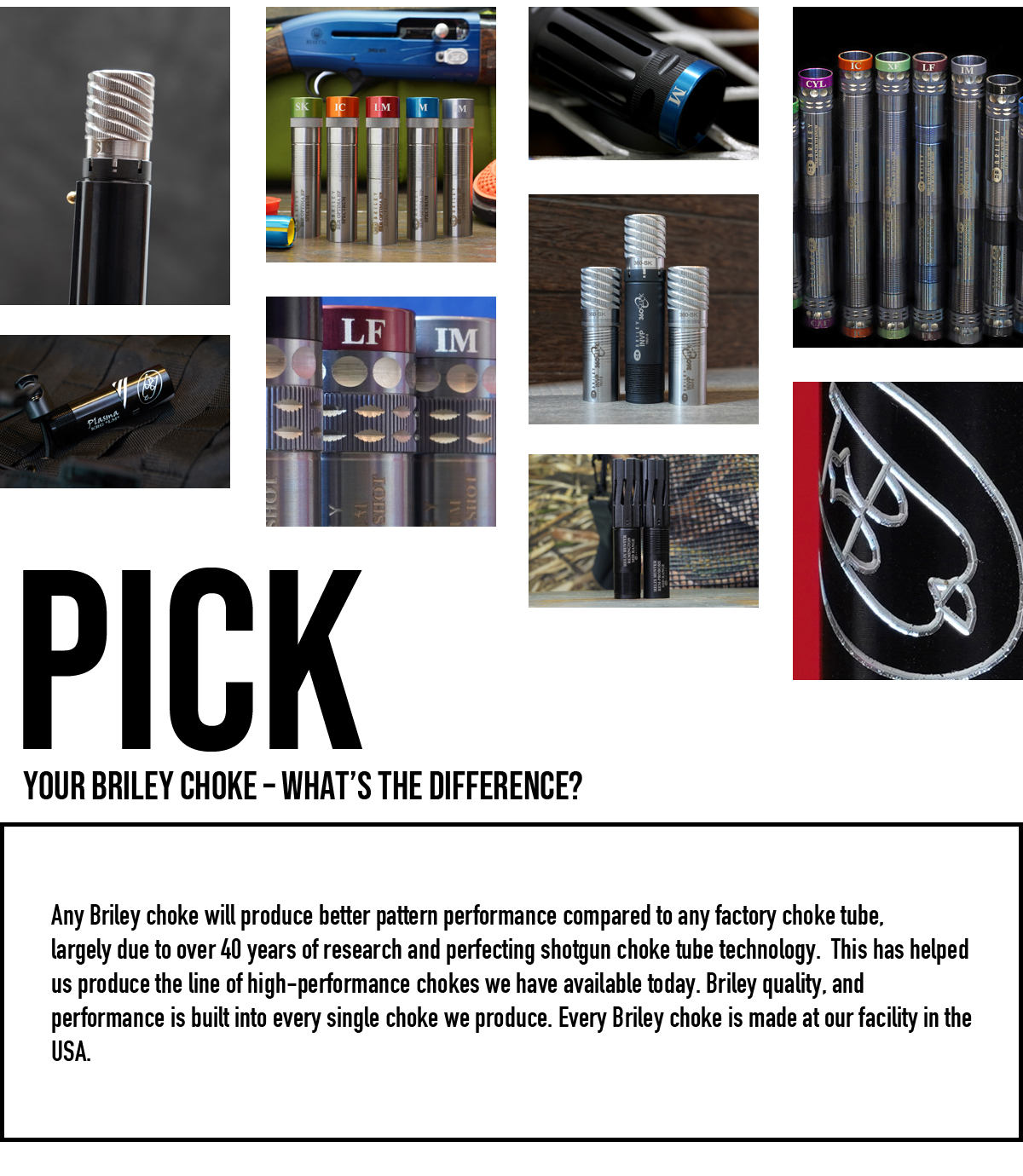
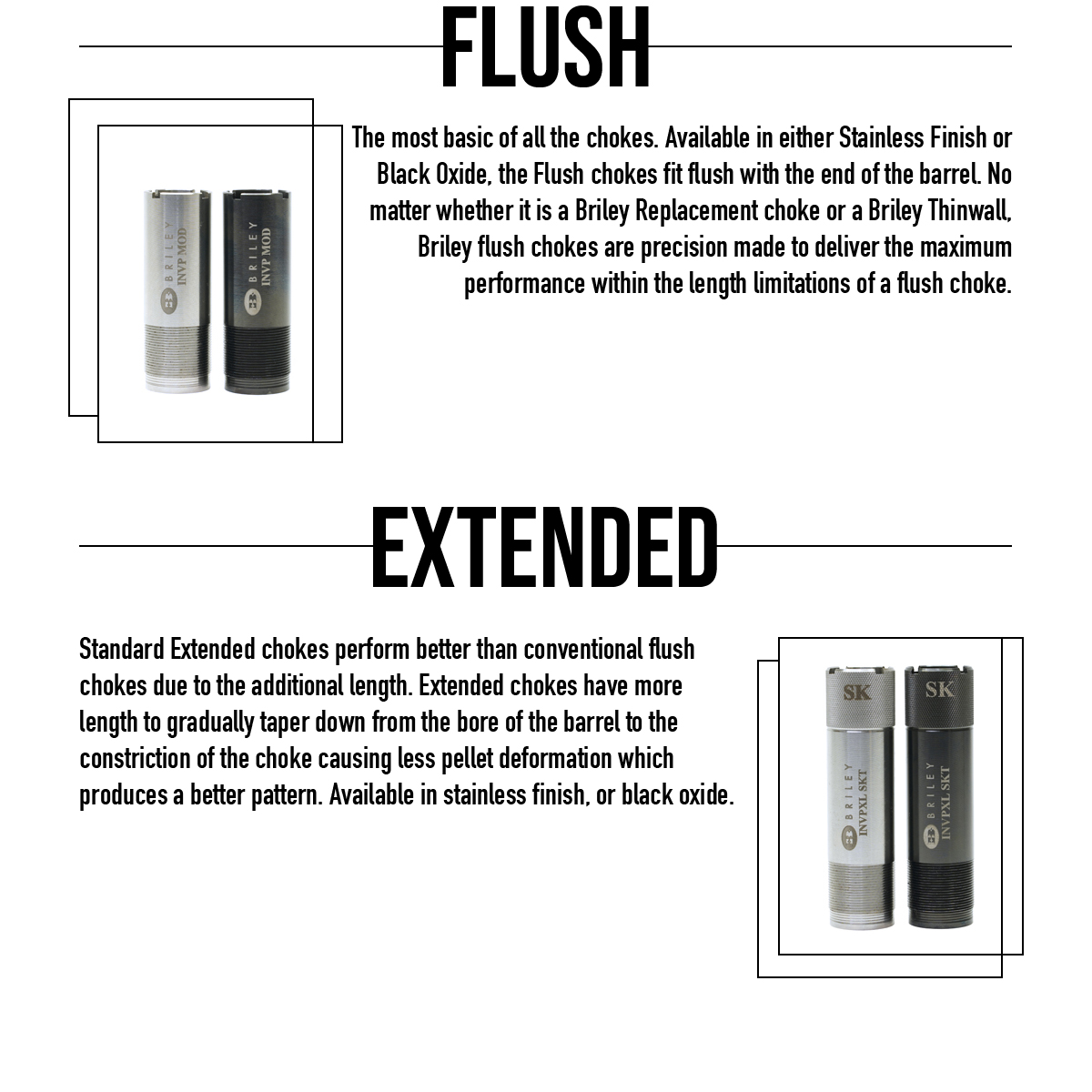
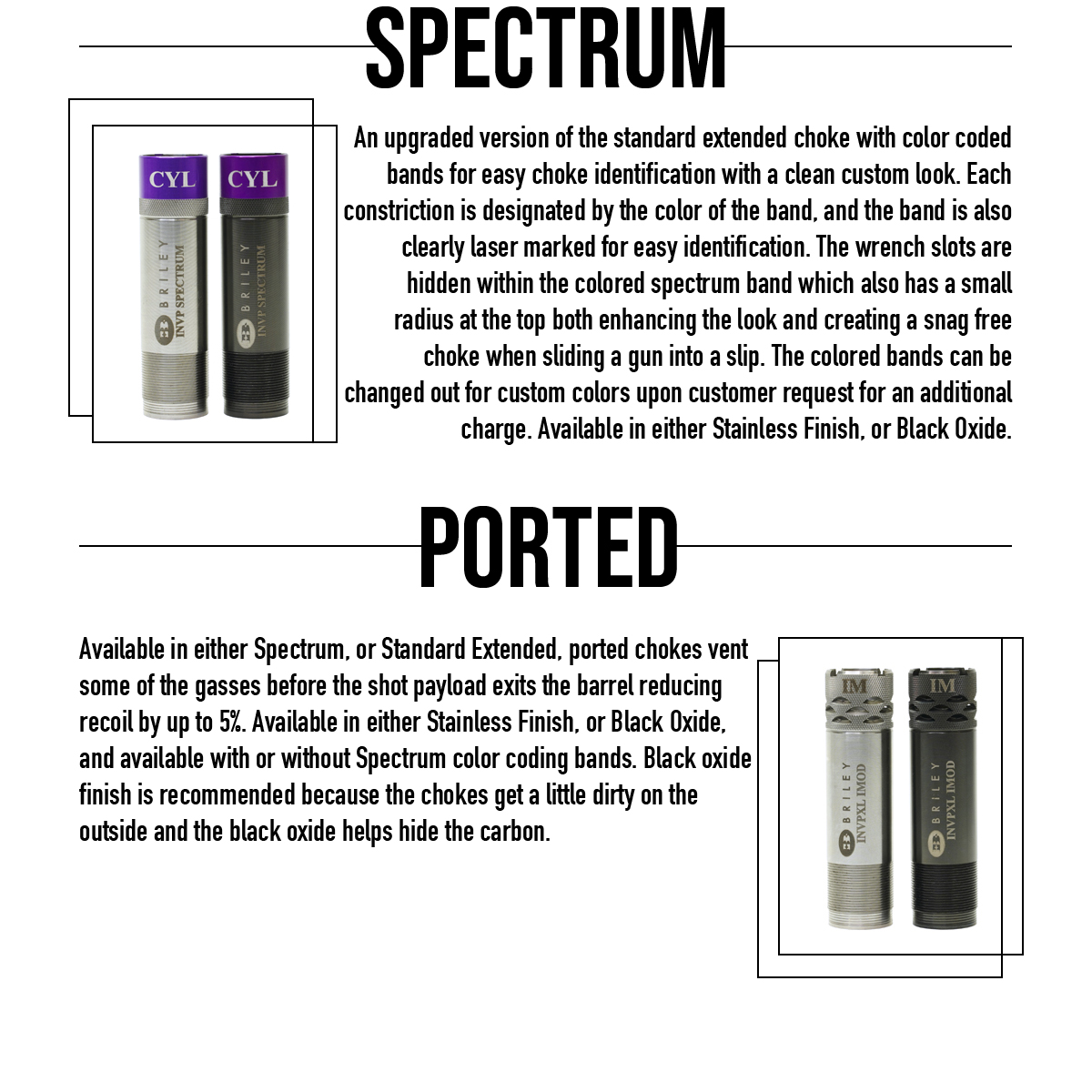
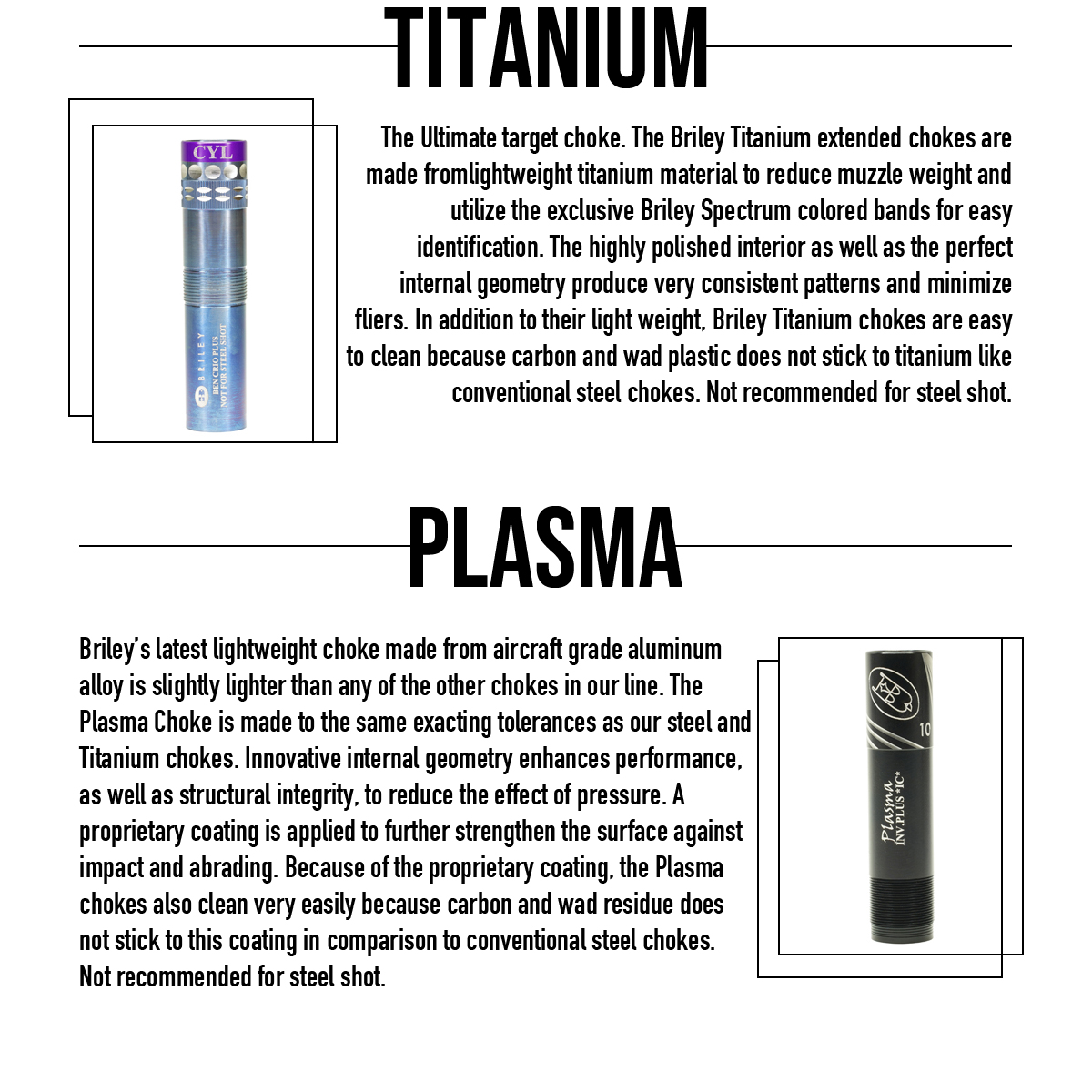
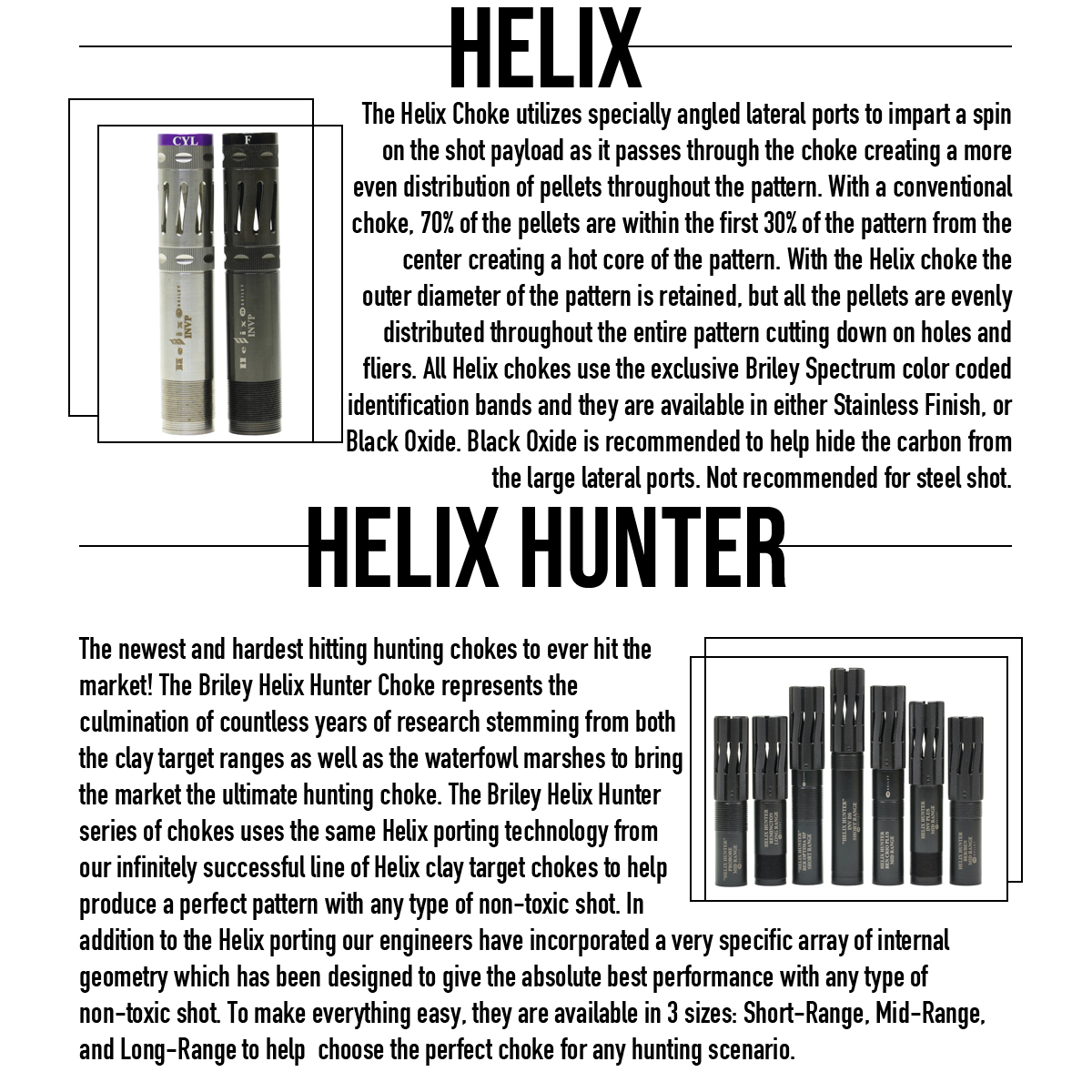
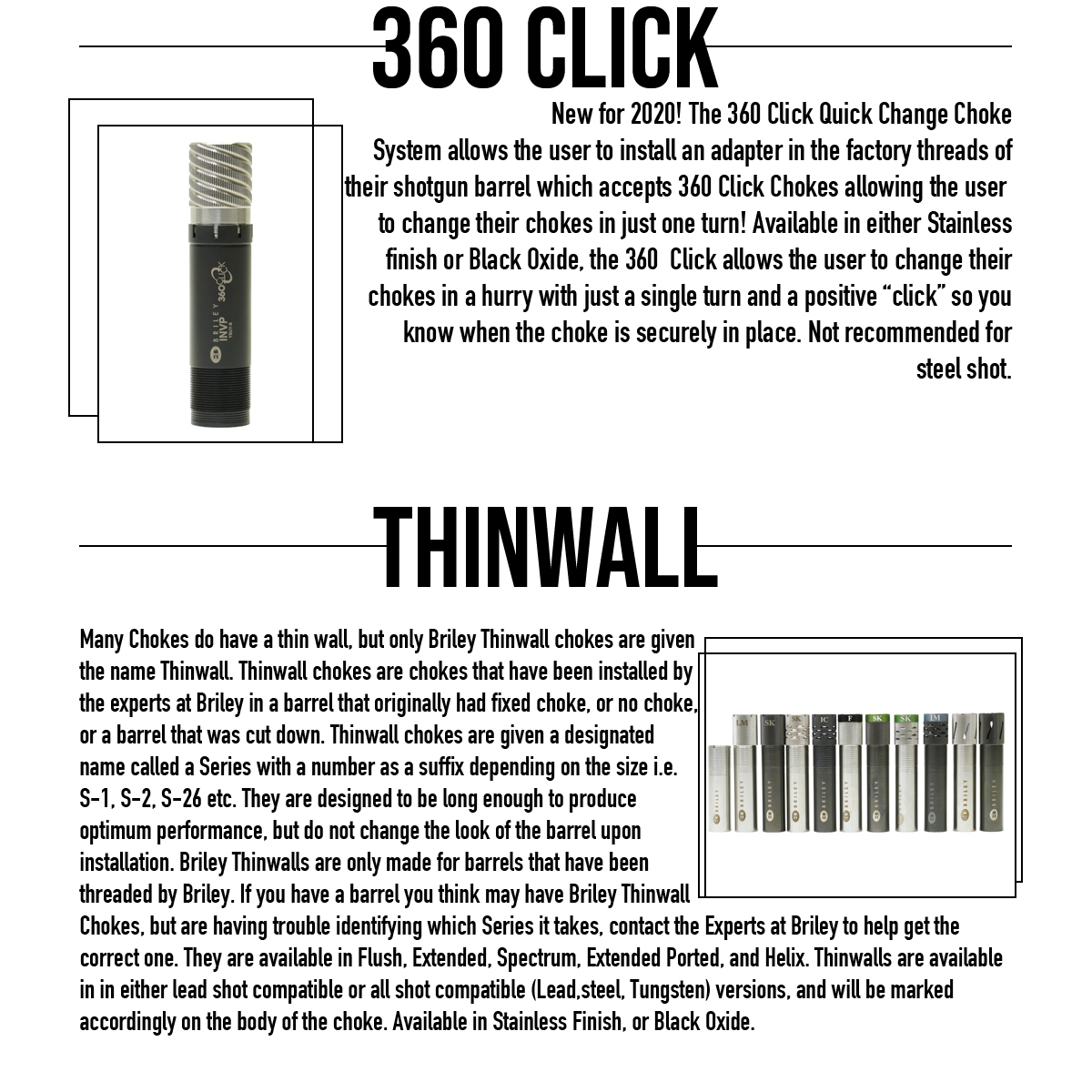
Understanding Shotgun Chokes
A brief explanation by Briley
If you are new to shooting and do not understand shotgun chokes, do not be surprised. Seventy five percent of shotgun shooters that have shot for many years do not understand shotgun chokes either. Let us start at the beginning. Shotgun chokes were designed to control pattern diameters at different yards. What is a pattern? It is just the grouping of the pellets at a given yardage. This grouping is called a pattern and is measured by a circle diameter. This particular circle must have certain efficiency. In other words, it has to have a certain number of pellets in a given area (called distribution) for it to be labeled an efficient pattern. It is that easy! However, the confusion starts when we label them and you try to figure out what to use and when.
Here is a quick reference chart:
| Shotgun Choke | Yardage | Shotgun Choke Restriction Diameter difference between bore and shotgun choke |
| Cylinder | < 20 | 0 |
| Skeet | 22.5 | .005 of an inch |
| Improved Cylinder | 25 | .010 |
| Light Modified | 30 | .015 |
| Modified | 32.5 | .020 |
| Improved Modified | 35 | .025 |
| Light Full | 37.5 | .030 |
| Full | 40 or More | .035 |
| Extra Full | 40 or More | .040 |
What is all that suppose to mean? It is confusing to most people. Before we answer this let us examine how a shotgun barrel is constructed. A shotgun is basically a big pipe, the hole in it we call the bore ( purple ); see figure below. At one end, where the shell goes in, we call this the chamber (yellow), the hole of the chamber is bigger than the bore and the transition area between the chamber and the bore is called the forcing cone (brown). The choke of the barrel, colored red, is located at the other end of the barrel. The transition area between the choke and the bore is called the tapered or the conical part (teal) of the choke; this area provides us with the transition geometry between the shotgun choke and the bore of the shotgun. Now you can visualize what it all looks like, so “within limits” the tighter or smaller you make the choke hole, the tighter the pattern at yardage.

Good Shotgun Chokes, Bad Shotgun Chokes. Why are some shotgun chokes so much better than other ones. There is undoubtedly a great deal of science in making the perfect shotgun choke and none of the knowledge keepers are too eager to share it. While the diameter difference between the bore and choke may be one of the shotgun chokes ingredients the science is in the macro details and factors such as material, length of barrel, shotgun choke geometry, and finishes as well ammunition are where the secrets are hidden. Simply put, “God did not create all chokes equal!”
Ok, so how does a shotgun choke actually work? Let us begin first with an easy metaphor, a child in out in the back yard playing with a garden hose. He discovers that if he puts his thumb on the end of the hose it goes further. That, kind of, is similar to what happens with a shotgun. Now for the scientific explanation by a nuclear engineer named Robert Hedrick. In a nutshell, his computer model and 35 years of research explains it in this way. There are two forces that tell the story; the mechanical properties while the shot column is in the barrel and the dynamic forces of nature that affect the shot column after it exits the barrel. When the shot column meets up with the choke it forces the column to squeeze tighter together; these forces are called radial forces. Once it is out of the barrel, wind resistance and gravity act on it. When the wind comes into contact with the outside pellets of the shot column it induces spinning and they start to flare off like a ping pong ball with english on it. The tighter the choke the heavier the radial forces, the tighter the pellets are squeezed together so the pattern holds tighter over a longer distance. Conversely, the less restriction you have in the shotgun choke the more loosely the pellets are held together and the faster the pattern opens up.
There you have it! You now know more about shotgun chokes than 98 percent of the shooters in the world.
Cliff Moller
Briley Mfg



